Watch What Happens When You Go For A Swim In The Dead Sea. It Looks So Strange!
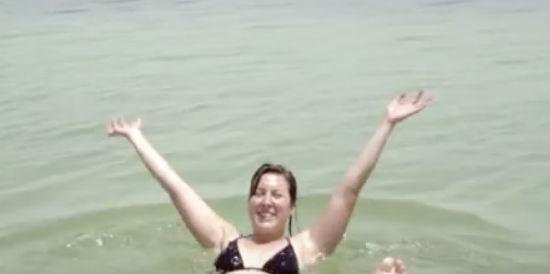
There is a perfectly rational reason for why the Dead Sea is also called the Salt Sea and the Sea of Death. It has unusually high salinity levels, with an average salt content of around 32-35%, which prevents most life forms from flourishing. In fact, it makes life near impossible and only tiny amounts of specialized bacteria and microbial fungi can eek out a living in it’s harsh, salty depths.
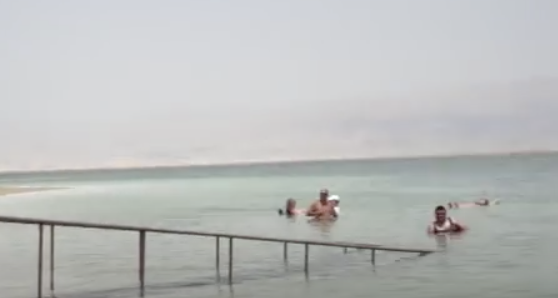
All that salt concentrated in one huge, landlocked lake makes for some interesting and unique phenomenons. The Encyclopedia Britannica says that its waters are 9.6 times as salty as the ocean, which in turn makes it 30 times more buoyant than normal, standard ocean water is.
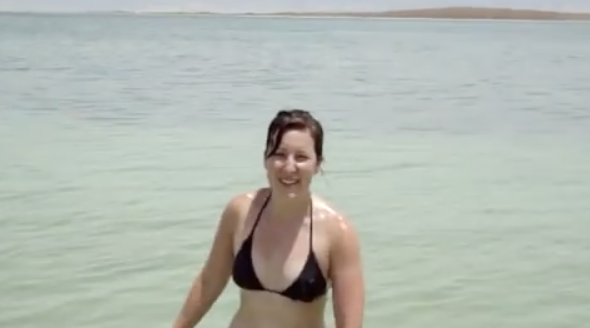
This is why anyone can enter into the Dead Sea’s water, turn on their back, and remain afloat without any supplemental paddling, kicking, or effort whatsoever. It has been said that it’s nearly impossible to sink in the water and therefore it would take a lot of work and exertion to drown.
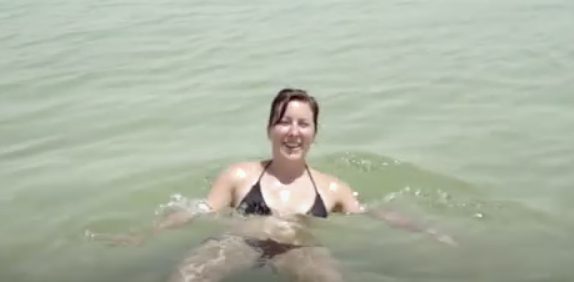
To see just how neat and awesome this translates over into reality, check out this video. A woman demonstrates the magically buoyant properties of the salty water and as the camera pans around you also get a chance to see the land and terrain that surrounds the lake.

Since it’s a major destination on the lists of tourists and sightseers, there are often many people at the water’s edge taking dips and testing it out. They would be wise to keep their heads above the surface since the extremely high salt content can burn and severely irritate your eyes, nostrils, mouth, and the delicate skin on your face.
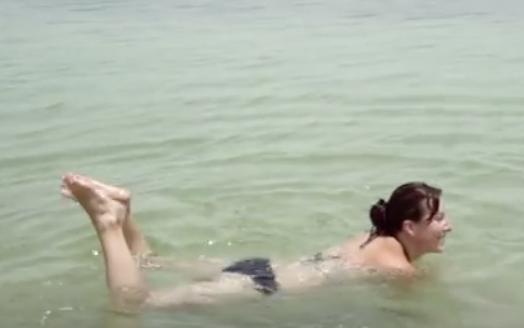
If you ever find yourself in Israel or Jordan you should visit the Dead Sea and experience it’s natural beauty and wonder. It may also provide you with many health benefits since the mineral content is high, the pollen levels are low, the sun’s harmful effects and radiation is diminished, and the atmospheric pressure is greater.
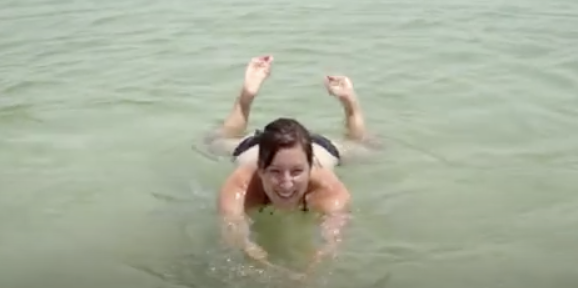
Such aspects have been praised by health researchers as having positive, healing effects on certain diseases and some of their side effects. Dead Sea mud has long been valued for it’s beauty uses in mud masques, and it provides temporary pain relief for some arthritis sufferers. With all these benefits, and nothing bad or dangerous about it, who wouldn’t want to take a dip in the Dead Sea?
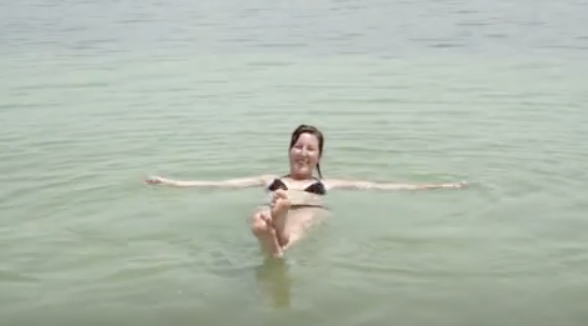
Please Share With Family and Friends
VIDEO: His Giant Dog Was Terrified Of Water. But Wait Till You See When His Human Does THIS
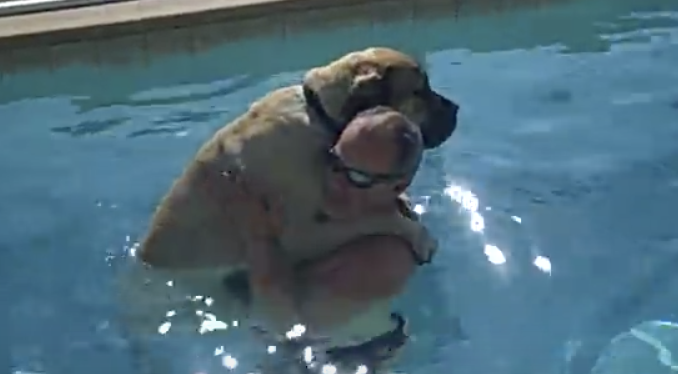
Dogs seem to either love or hate water. Some will run and jump right into a pond or stream without hesitation while others do everything in their power to avoid ending up in it. Despite having a swimming style named after them, not all dogs have the natural ability to swim and stay afloat. Some do and others can be taught to swim, with proper oversight for their safety.
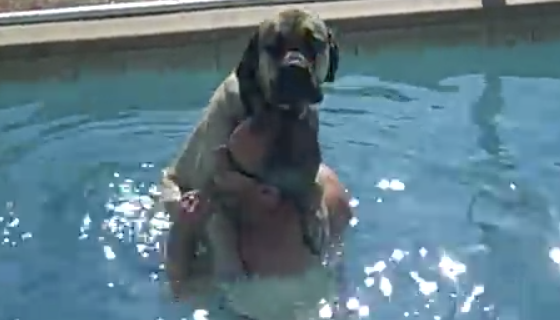
There are also certain dogs should not go near water because they easily tire or get cold, are deathly afraid of it and panic, or their legs are too short to adequately keep them afloat. If your dog falls into one of those categories you should not allow them near deep water unsupervised or try to teach them how to swim.
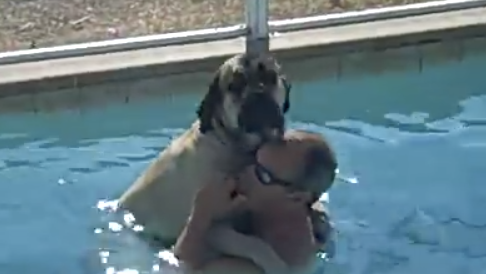
If you have a big, calm, lovable dog like the English Mastiff named Samson in this video, then you can go ahead and give your pup a swimming lesson. The adorable dog is hesitant and afraid at first, unsure of what to do and not wanting to let go of his dad who is holding him afloat in the water.
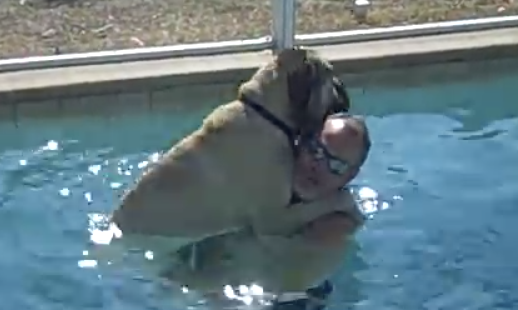
The sight of such a huge dog clinging to his owner in a pool is heart warming, amusing, and kind of funny! Samson gets some much needed reassurance as his dad rubs his back and tells him it’s alright and that he’s being a good boy. After a little time and with his owner’s calming patience, the big puppy begins to gradually relax and accept the water.
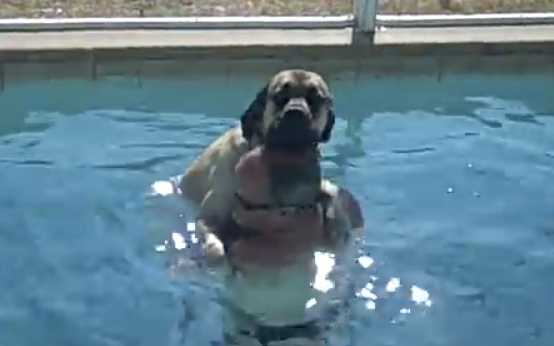
Sensing the moment is right, his owner sets him up for his first solo attempt at swimming, then lets him go. Samson is clearly a natural as he takes off doggy paddling towards the steps without ever once sinking down or flailing around.
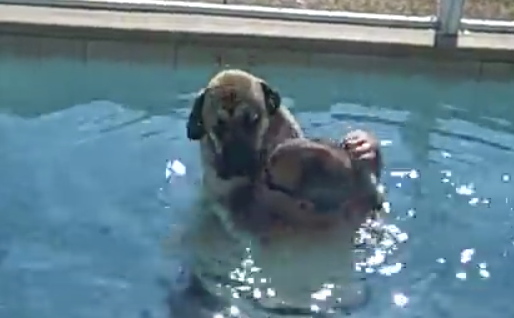
Now he can cross it off his bucket list and be all the more confident and safe around the pool and other large bodies of water! His mom and dad are thrilled with their cherished dog’s progress and it’s wonderful to see such a happy and momentous occasion.
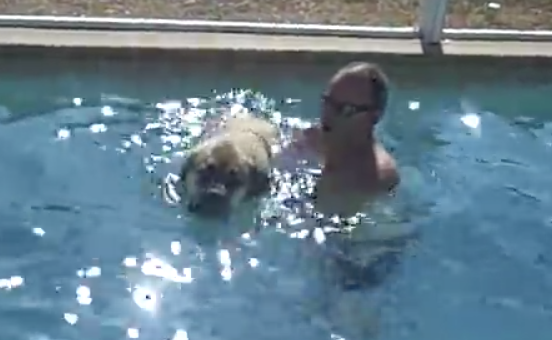
Check it out if you want to smile and remember to always take precautions and supervise animals and children around pools to keep them all safe.
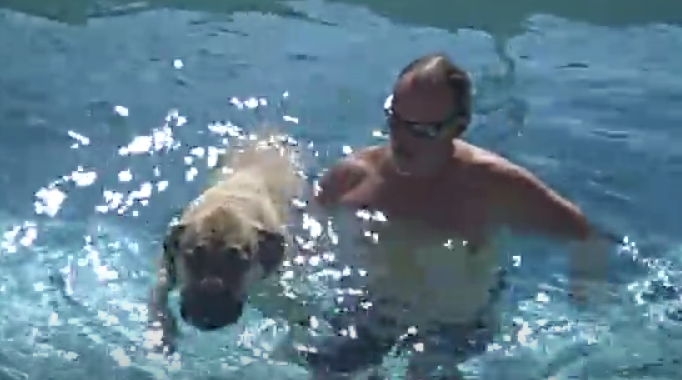
Please Share This Adorable Video With Friends On Facebook
This Mom’s Son Died An Hour After He Swam At The Pool. I Had No Idea This Was Possible.

Cassandra Jackson took her young son, Johnny, to cool off and play at their neighborhood pool. She watched as the ten year old splashed around in the cool water and escaped the oppressive June heat. Eventually they headed home and about an hour later Johnny told his mother he was really sleepy. She wrote his tiredness off and attributed it to being out in the sun and playing all afternoon.
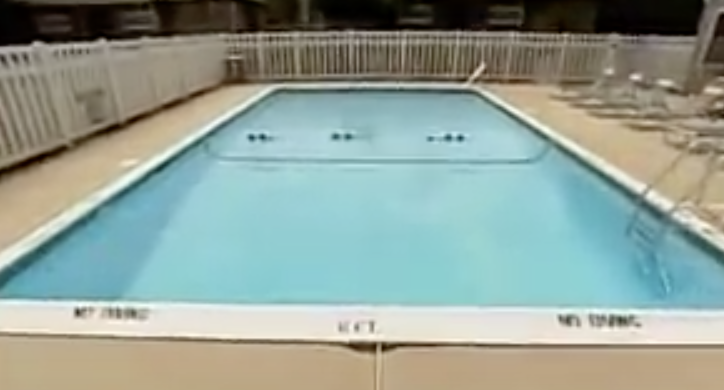
He laid down to take a nap and when Cassandra went to check on him later she faced a sight no parent ever should have to. Johnny’s face was covered in a white foam-like substance and he had no signs of life. The coroner determined that his cause of death was asphyxiation by drowning, but how could a seemingly healthy young boy drown over an hour after he left the pool?

His mother expressed her shock and surprise best when she said “I’ve never known a child could walk around, talk, speak, and their lungs be filled with water.” Not many people are aware of dry-drowning, which is a delayed type, and yet it’s just as dangerous as the more commonly known, immediate type of drowning.

Warning signs include difficulty breathing, excessive tiredness, and dramatic changes in the child’s behavior. Don’t risk a child’s life, immediately bring them to the hospital and get them medical attention if you notice any of these factors.

Every second counts as this is potentially fatal, especially in young children. Medical professionals can evaluate the child and determine if they need help. If a child does need medical care, doctors would intubate them, which forces air into the lungs and helps to clear the fluid.

Most critically, the lungs need to be able to take in and absorb oxygen from the air once again. Their ability to do so is severely limited and suspended, and that combined with extra fluid in a child’s lungs can possibly lead to death.

This type of delayed drowning is surprisingly not that uncommon, with an estimated 10-15% of all drowning deaths being attributed to it. What is surprising is that not a lot of people have heard about it or know what signs to look for in potential victims of a dry drowning. Furthermore, it can happen in salt water, fresh water, chlorinated pools, and even in the bathtub.

Please Share this with family and friends




